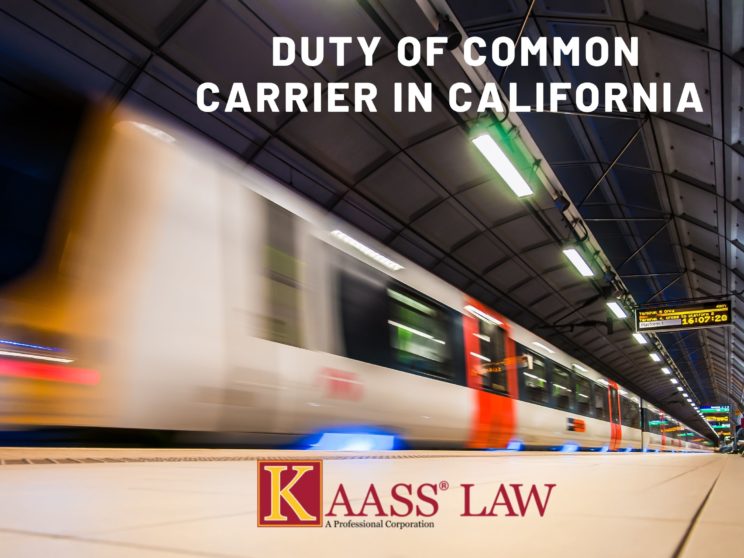According to California Civil Code Section 2168, a common carrier is everyone who offers the public to carry persons, property, or messages, excepting only telegraphic messages. Typically, a common carrier is transportation company that has a contract to transport property, people, and goods across or around within state lines as public services.
Requirements of Being Labeled as a Common Carrier
A transportation company which wants to be labeled as a common carrier should meet the following requirements:
- The transportation company was established for transporting goods or people from one place to another
- The company sets itself out to the public as a transportation company
- The transportation company charges a fee for transporting good or people from one place to another
Examples of Common Carriers in California:
- Railways
- Buses
- Streetcars or Cable Cars
- Taxicabs
- Elevators Escalators
- Airlines
- Ski resort chair lifts
- Cruise ships
Elements Plaintiff Must Establish Under a Negligence Cause of Action
Here are the elements which the plaintiff must establish under a negligence cause of action:
- Defendant owed a duty of care is to the plaintiff
- Defendant breached his duty of care to the plaintiff
- Defendant was the proximate and actual cause of the plaintiff’s damages
- As a result of the defendants’ negligence plaintiff actually suffered some psychological or physical harm
Standards and Guidelines for Common Carriers in California
Common carriers in California are subject to a higher standard of care than other automobile operators. Under California Civil Code Section 2100 a common carrier “must use the utmost diligence and care and for the safe carriage, must provide everything necessary for that purpose, and must exercise to that end a reasonable degree of skill”.
Typically, common carriers must follow the below-mentioned guidelines:
- Common carriers must provide a safe vehicle to all passengers that are fit for the duties it was hired to perform
- Common carriers must treat give the passengers a reasonable level of attention and treat them with civility
- Common carriers must warn the passengers of any dangers, protect them from the dangers, including dangers caused by other passengers
- Common carriers must carefully choose employees and provide them with adequate training
- Common carriers regularly perform maintenance on the vehicle, safety inspections and make sure all equipment is up to current safety standards
Who Can Be Liable for an Accident Involving a Common Carrier?
Here are some examples of unseen parties that can be liable for an accident involving a common carrier:
- Owner of common carrier
- Company of common carrier
- Operator of common carrier
- Manufacturer of common carrier
- Maintenance company
- State government
- Local government
Filing a Lawsuit Against a Common Carrier in California
Normally a plaintiff has two years from the date of the accident to file a personal injury cause against the common carrier.
There is a six-month deadline to file a claim for plaintiffs who have suffered injuries while on-board common carriers owed by public entities. Failure to file a claim within the six-month period will bar the injured person from recovery. In some cases, California civil courts allow exceptions for this rule:
- Physical or mental incapacitation of the victim.
- Minor status of the victim. Victim under the age of 18 has two years from the 18th birthday to file a personal injury claim.
- The injury manifested itself a later time after the accident.
Compensation for Injuries Involved With Common Carriers in California
Victims suffered from the common carrier’s negligent conduct have a right to monetary recovery for all their losses, including:
- All present and future medical expenses
- Cost of rehabilitation
- Pain and suffering
- Lost wages
- Loss or reduction of income

